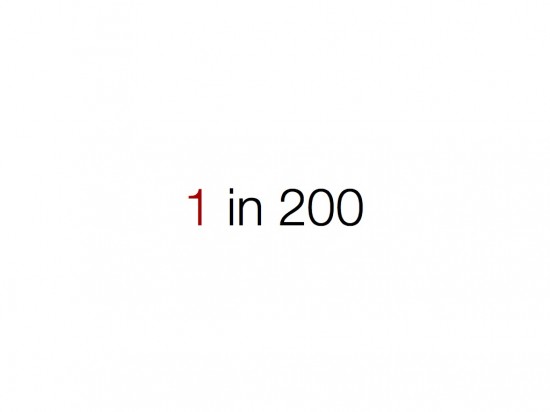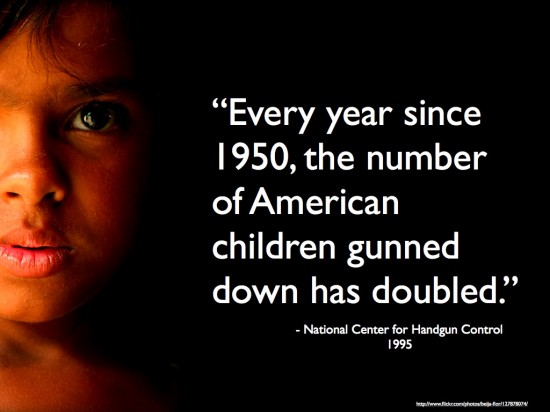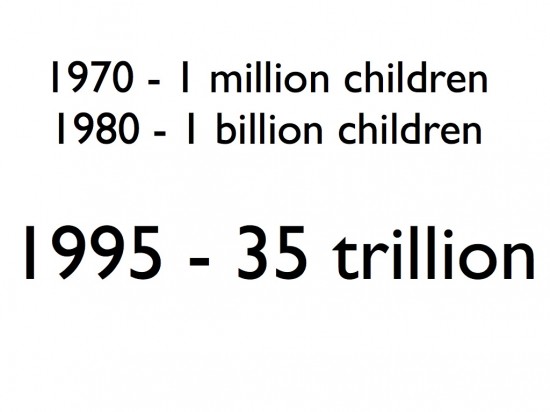Before recording my response to Dan Meyer’s challenge1 I might as well continue what I started the other day.
So we had a pretty brief section where we learned (surprise, surprise) that there’s a lot of new information in the world and most of it is on some form of magnetic media. There was conversation around those facts and maybe it changes what kids/we need to know and do and maybe it doesn’t.
So we know there’s lots of information. Let’s take a closer look at both why this information is exploding and what kind of information is being put out there.
I can publish anything I want right now – text, audio, video – or any combination of the three – and what’s more I can do it for free and I can reach a world-wide audience. (really not sure about this slide, I made probably four other versions and just went with the simplest one)

There are great things about this personal publishing revolution but there are downsides as well. Huge amounts of information lack even the most superficial vetting and as more and more information is published at ever increasing speed it gets more and more difficult to find the quality pieces you need (the red 1s appear with flashes one after another- not sure that works either-a little cheesy maybe).

So the way people are wading through all this information now is search. In July of 2008 Google had 235 million searches a day. That’s just on Google. As late as 2007, 20 to 25% of all searches on Google had never been done before (this stat may not be recent enough to be effective).
What’s more is that the web has changed fundamentally as it has grown. People don’t go to web sites the way they used to. They don’t go to the home page and work their way in. 75% of people go to information directly from their search results.
That makes sense right? But if people are relying this heavily on search, how good do you feel most students, or teachers for that matter, are at searching?

So we know people are searching a lot. Where are they ending up? Who wants to guess which site was getting 1 out of every 200 page views in 2007?
Love it or hate it. It’s Wikipedia.
Do you think that number has increased or decreased? Does it matter? Does it change what we need to do with our students?

Indulge me for a second. What do you think about this quote?
Another factor that massive amounts of media causes is an increase it what it takes to get attention. That results in facts like this one that was quoted in a variety of papers and in the media in 19952.

Even if you start with only one child dying in 1950, you’d be cutting into our population just a bit by 1995. It’s obvious this statistic is false if you give it a little thought yet it was published and quoted numerous times.
Organizations feel they need very dramatic stats to capture the attention of media outlets and media outlets feel they need very dramatic stats to capture the interest and attention of viewers. This leads to a very unpleasant cycle if you’re after the truth and want to make decisions based on facts as opposed to emotion.
We need students who treat all information sources with a degree of skepticism, even the “trusted” ones.

Anyone remember seeing this image? It made it into a lot of mainstream media publications.
This slide shows a non-retouched photo and then allows me to point out the photoshopping.
The speed at which things are published also works against vetting. That rush to be first results in inaccuracies and sources aren’t checked out quite the way they might be if publishing wasn’t so rapid. This particular image didn’t create any ripple effects but it could have.
What kind of skills would help people identify this sort of manipulation on their own?
How do we prepare our students when the line between entertainment and news is getting increasingly blurry?
That’s probably enough for now. I’m sounding a little overly dramatic even to myself.
Once again, help me make this better. That goes for images, argument, facts – whatever. I guess the main idea is that – There’s lots more information out there than ever before. Do we have to rethink what we’re teaching students in order for them to be successful in the world?
1 Besides writing this now cements my obligation to get the recording done, which I never remember to do when presenting live. I’d do it now but all the kids, baby included, are sleeping and the house is just too peaceful. I must not risk disturbing this.




I don’t see a great need for synced audio if you’re going to be this explicit about the content of your talk. I get very well what you were after here.
You obviously know enough about typography to be dangerous. I can’t teach you anything about graphic design you don’t already know.
I’ll say, then, that the first slide that really piqued me was the newspapers side-by-side.
Maybe the statistic slides are something of a necessary evil. But I’ve always maintained that the power of the presentation revolution isn’t bound up in PowerPoint’s ability to display text or numbers or data. Rather, in its ability to pull media from all over the Internet — audio, photos, and videos — and display them quickly and cheaply, for discussion.
Which is why the presentation really takes off after the newspapers, after you start feeding stuff through your projector that your voice is powerless to describe and that paper is nearly powerless to convey.
My two cents. Thanks for the transparency.
I found your post quite interesting. I was surprised to read how many people searched Google on any given day last summer, yet I use Google to look up EVERYTHING. I’m a college student and I know that I would surely be lost without Google. But you raised a good point- with all of the information that’s available to us, how do we truly know if the information is valid or not? Despite the rumors, I’ve learned that Wikipedia is actually quite valid. Not just anyone can post whatever they want on it and it’s content is proven to be true before posted (or comments at the top will state otherwise). In school my professors are actually teaching us how to tell if a source is valid or not just by reading the URL and by reading what sources the writer used. These things seem small and are easily skimmed over, but reading them can save students a lot of trouble. I think it’s good for students to be aware of false information and they should be taught how to search for good information. Before we send them out searching, we should show them how to conduct a good search on Google and how to eliminate bad information.
Dan,
Thanks. That does make me think.
I wonder if I can’t just run through the “Hey, there’s lots of information!” part in a minute or two (kind of a “we all know there’s lots more stuff out there . . .”) and get into the conversation around the different mindset/tools needed to organize, evaluate and process it.
I do this multiple times so I’ll do it that way at least once and see what happens. I had to trim a number of slides on media that I really liked to keep the presentation from getting too obese. I’d like to bring a few of them back.
You’ve got me thinking so it was well worth the effort of the post.
I still don’t get the missile pics and what/why the photos were photoshopped? The rest is FANTASTIC, imho. I like the pared down type only because you’re hitting some really key stuff. The biggest challenge I face is teaching students how to evaluate Web resources. This is very difficult to do sometimes when they are 9-11 yos, but as you point out, really key.
A. Mercer-
I wasn’t really clear on that. Essentially, Iran released the missile pic and added a missile. One of them didn’t fire so they just photoshopped it in and sent it out to the newspapers who printed it.
4 missiles instead of 3 isn’t that big a deal this time but next time might matter and might impact public sentiment which would then impact public policy and lead to war etc.
I do a better job saying it (at least I hope so). It got a little boring writing all this, which probably means I should cut things down.
I appreciate you taking the time to comment.
I think it was because you were adding the photos over each other in layers, and the one with only three was under. No, it makes more sense, and that is good.
I’ll keep trying with my kiddos on this. When I intro Google searching to them, I ask them in fourth, “Is the site selling you stuff, or is it good for your research?” which is a crude approach, but they handle that well. I’m thinking about how to move that up to the next level of analysis. Had a recent argument with NetTrekker about how their service undermined teaching kids this.